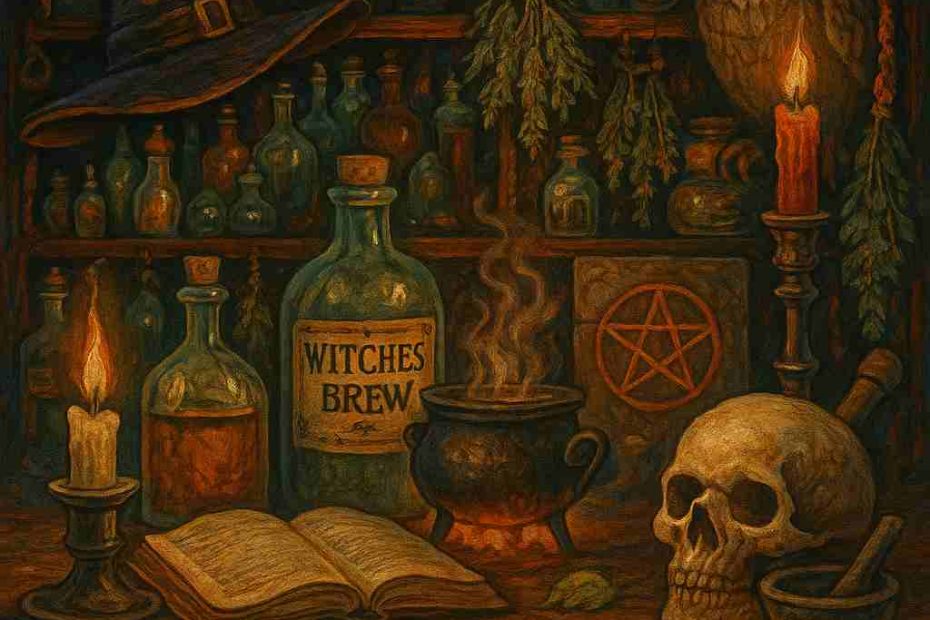Throughout history, few concepts have captured human imagination as powerfully as the “witching hour,” often referred to as the time of night when supernatural forces are at their strongest. From folklore to literature, movies, and even modern ghost stories, this period has been surrounded by both fear and fascination. But what exactly is the witching hour? When does it occur, and why has it become such an enduring part of cultural beliefs worldwide?
In this guide, we will explore the origins, meanings, and cultural interpretations of the witching hour, while answering the central question: when is the witching hour really?
The Origins of the Witching Hour
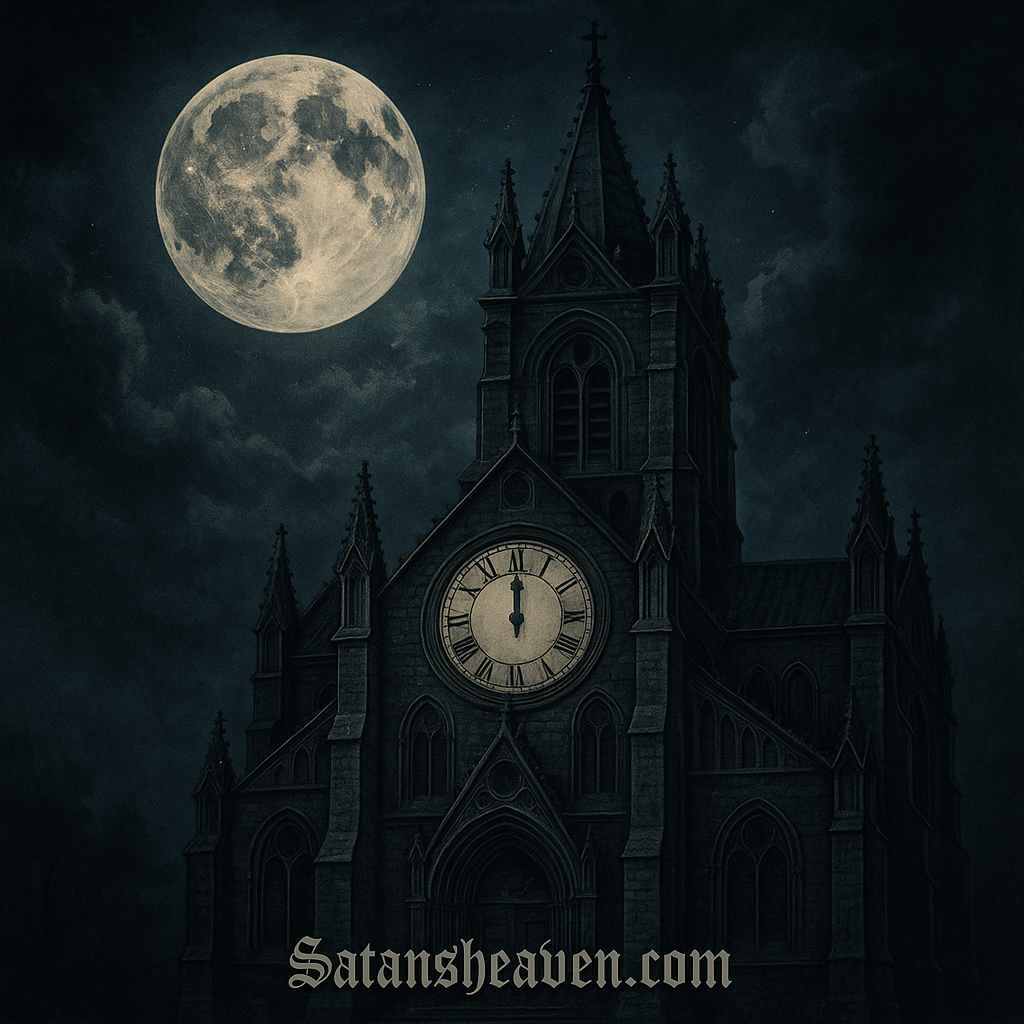
The phrase “witching hour” has its roots in medieval Europe, particularly during the period when the Church played a dominant role in shaping cultural beliefs. Many historians trace its origins to the 1500s, when fear of witchcraft and demonic activity was at its peak. The Church declared that the time between midnight and 3:00 a.m. was especially dangerous, as it was believed that the veil between the physical world and the spiritual world was at its thinnest.
During this period, people believed witches, demons, and restless spirits roamed the earth in greater numbers, making midnight a time of vulnerability. Rituals, spells, and exorcisms were often associated with this time frame. Thus, the witching hour became synonymous with danger, dark magic, and the unknown.
When Exactly Is the Witching Hour?
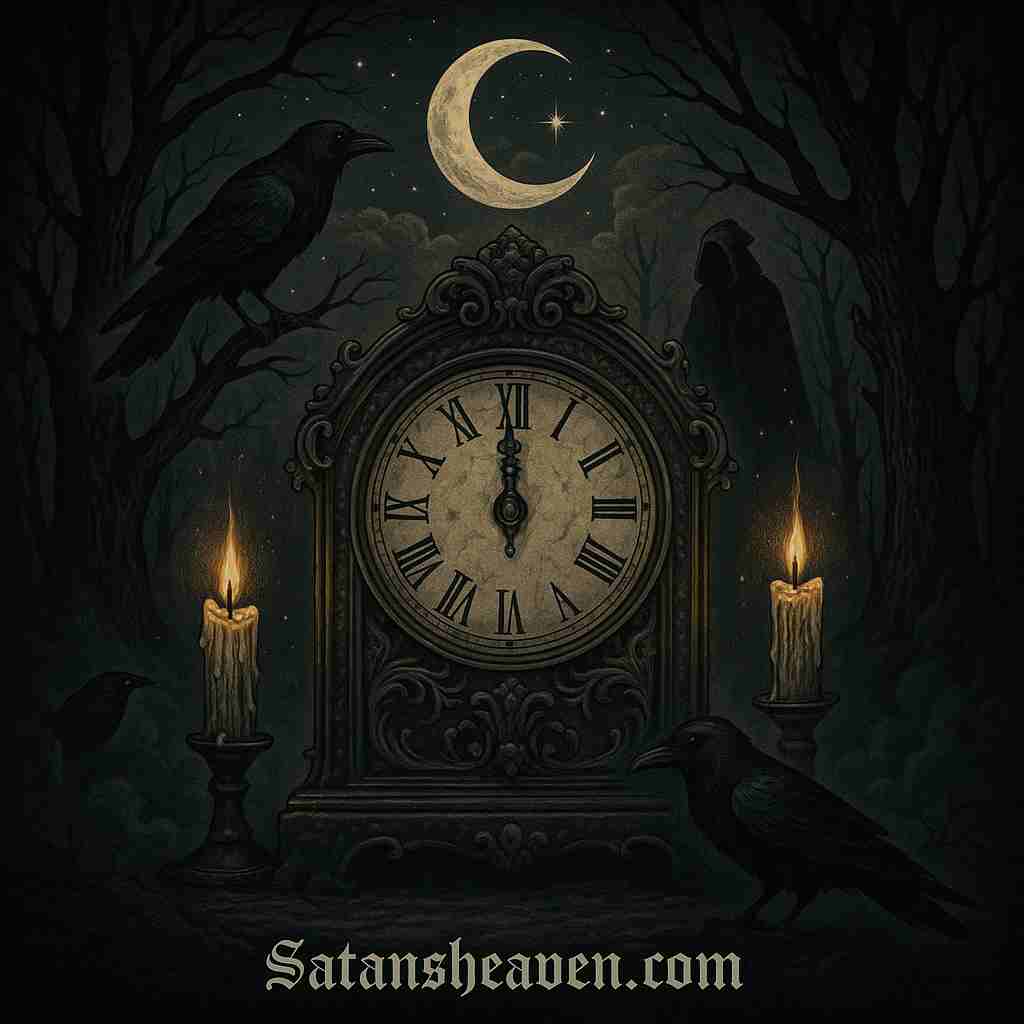
The most widely accepted answer is midnight to 1:00 a.m., with 3:00 a.m. sometimes referred to as the “Devil’s Hour.” These time frames are often used interchangeably, but subtle differences exist:
- Midnight to 1:00 a.m. – Traditionally considered the original witching hour in European folklore.
- 3:00 a.m. to 4:00 a.m. – Often labeled as the Devil’s Hour in Christian belief, marking a direct inversion of 3:00 p.m., the time associated with Christ’s death.
So, depending on cultural context, the witching hour could either mean the first hour after midnight or the eerie window of 3:00 a.m. The common thread is that it represents a moment of heightened supernatural activity.
The Witching Hour vs. The Devil’s Hour
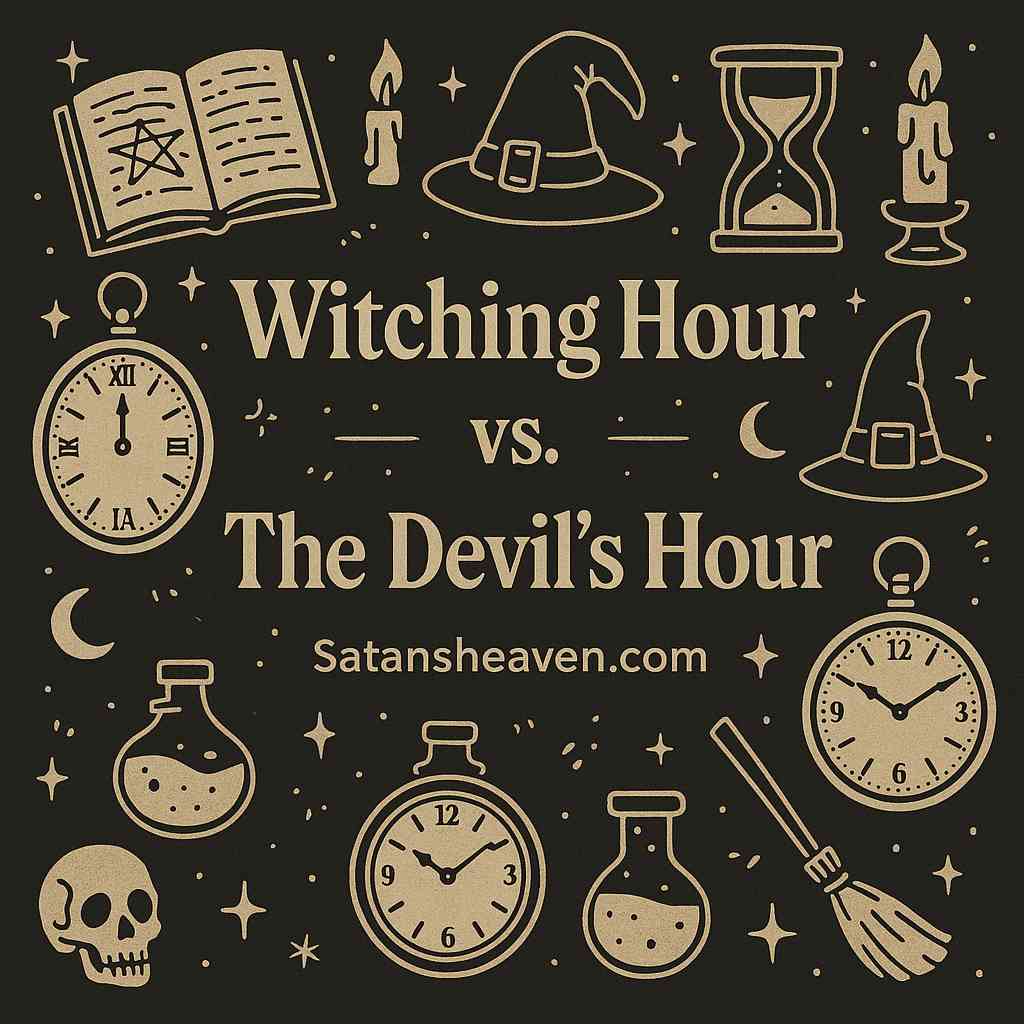
It’s important to note the distinction between the “witching hour” and the “devil’s hour.”
- The witching hour generally refers to midnight, when witches and supernatural beings are thought to be strongest.
- The devil’s hour, usually 3:00 a.m., is believed to mock the Holy Trinity and is often described as the darkest point of night.
This subtle difference explains why horror movies frequently feature clocks striking 3:00 a.m. just before something terrifying occurs.
The Witching Hour in Witchcraft and Magical Practices
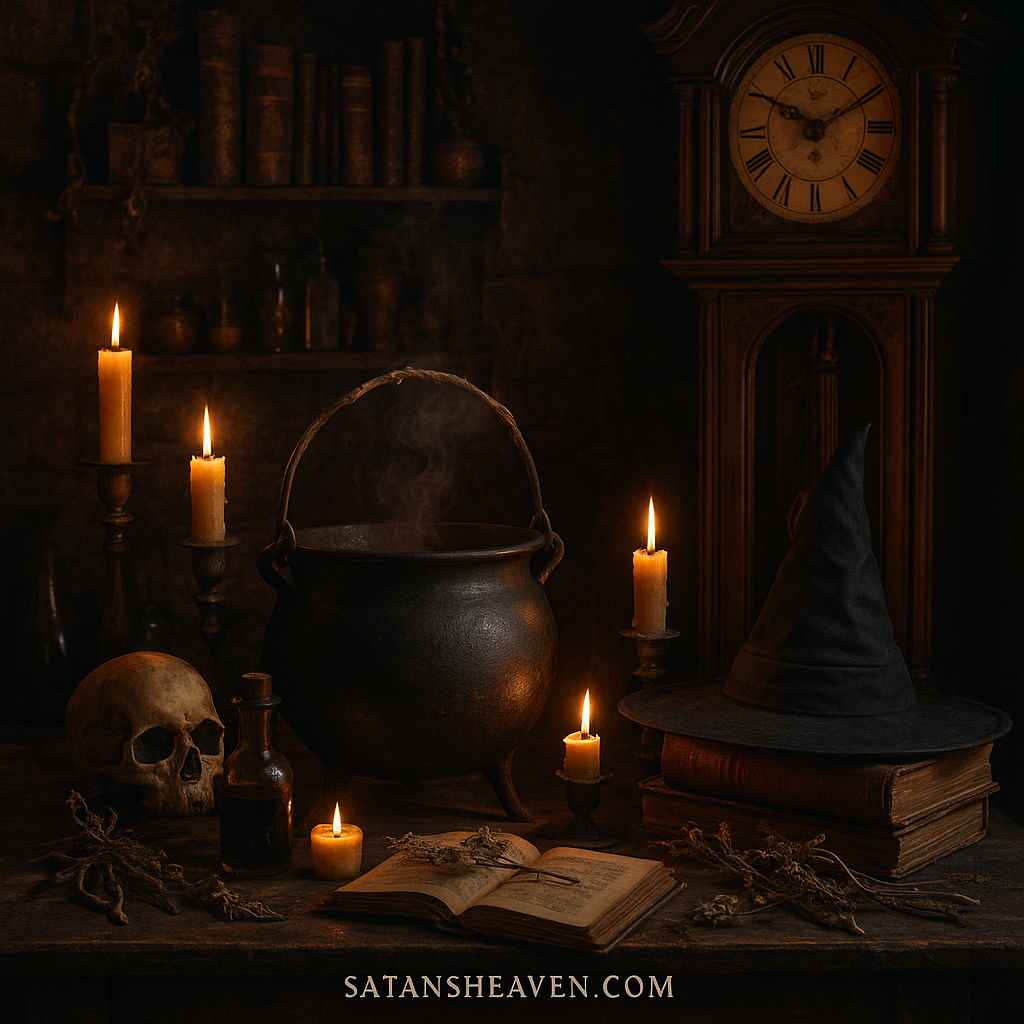
Within witchcraft and modern pagan traditions, the witching hour is seen less as a time of fear and more as a period of heightened magical potential. Practitioners of Wicca, traditional witchcraft, and other spiritual paths often view midnight as a threshold moment—a liminal space between one day and the next. This “in-between” quality makes it especially powerful for spells, rituals, and divination.
Midnight is believed to enhance intentions related to transformation, protection, and communication with the spirit world. Spellcasting during the witching hour is often thought to carry greater energy because the veil between the material and spiritual planes is considered thinner. Many witches also use this time for scrying, tarot readings, or connecting with ancestors and deities.
While some traditions emphasize 3:00 a.m. as an equally potent magical hour, especially for banishing or protective work, midnight remains the classic time associated with witchcraft practices. Rather than avoiding the witching hour, many practitioners actively embrace it, turning what was once a source of fear into a tool for empowerment.
The Witching Hour in Folklore Around the World
While the witching hour is most often linked with European traditions, similar beliefs exist across cultures worldwide. Here are a few examples:
- Latin America – The time between midnight and dawn is often seen as the period when restless spirits wander. Stories like La Llorona are frequently tied to late-night hours.
- Japan – Folklore suggests that yūrei (ghosts) appear most often between 2:00 a.m. and 3:00 a.m.
- India – Many traditions believe that spirits become more active at night, particularly during transitional times like midnight.
- Africa – Some cultures believe that ancestors or spirits communicate during the late hours of the night when human activity is quietest.
These variations demonstrate that the idea of a “spirit-filled hour” is nearly universal.
Why Midnight Feels More Supernatural
Psychologists and scientists have studied why midnight and the hours that follow seem to feel more “haunted.” Some explanations include:
- Sleep cycles – Humans are often in their deepest sleep between 2:00 a.m. and 4:00 a.m., making sudden awakenings during this time feel more disorienting and frightening.
- Silence and darkness – Midnight hours are the quietest part of the night, with fewer distractions, making people more aware of small noises.
- Cultural conditioning – Because so many stories and films depict paranormal activity at night, our minds are trained to expect something eerie.
Thus, while there may not be scientific evidence that ghosts appear at midnight, human psychology reinforces the sense of unease.
The Witching Hour in Paranormal Investigations
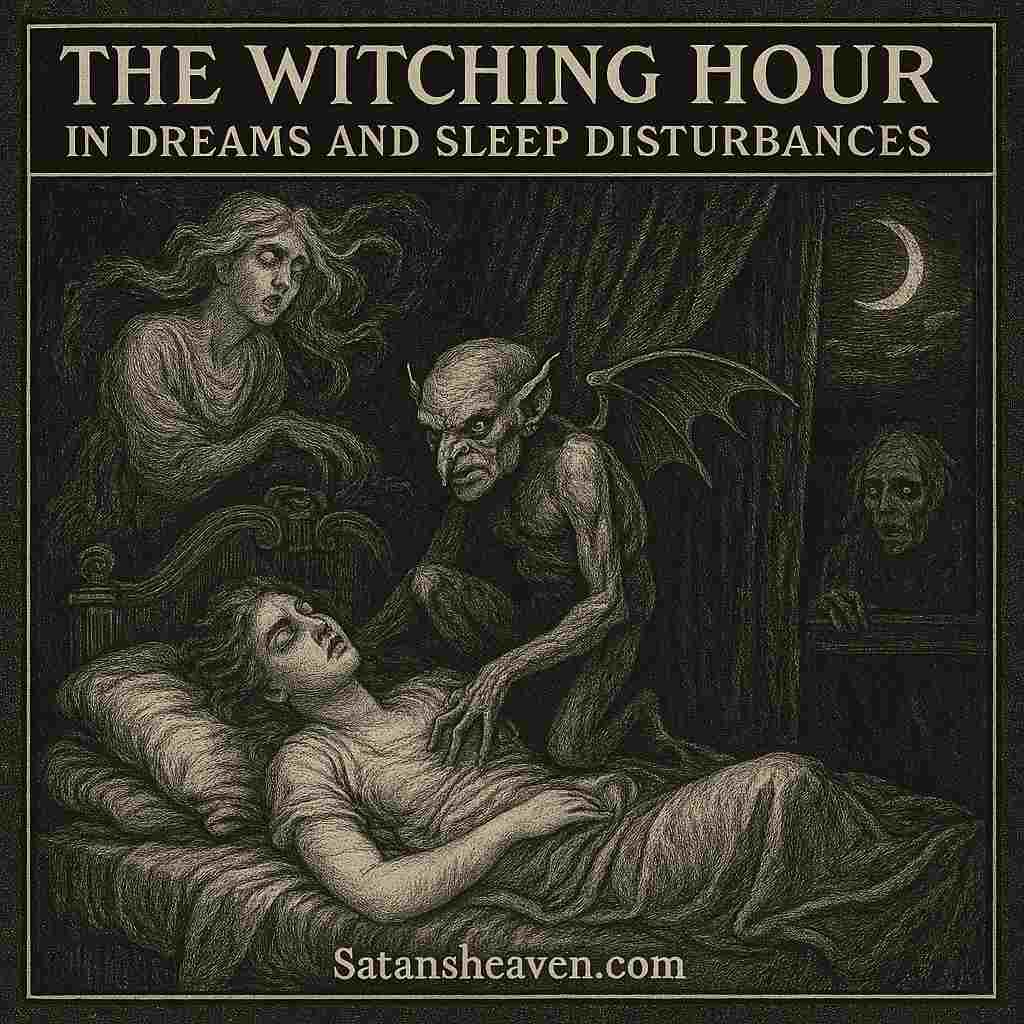
Ghost hunters and paranormal enthusiasts often plan their investigations around the witching hour. Many believe that spirits are more active during this time because the environment is quieter, electromagnetic interference is lower, and human energy is at its lowest. Tools like EVP (electronic voice phenomena) recorders and spirit boxes are often used during these late hours to capture potential supernatural activity.
Whether or not one believes in the paranormal, the witching hour has become a central feature of ghost-hunting culture.
The Witching Hour in Dreams and Sleep Disturbances
Many people report waking suddenly at 3:00 a.m. and feeling uneasy, a phenomenon often called the “3 a.m. wake-up.” From a psychological perspective, this is related to natural sleep cycles and stress. However, in folklore, this time has long been associated with supernatural visitations. Some even believe that waking during the witching hour means a spirit is trying to make contact.
Spiritual Interpretations of the Witching Hour
In addition to fear-based traditions, some cultures interpret the witching hour as a moment of spiritual openness rather than just danger. Certain spiritual practitioners believe midnight is a time when meditation, prayer, or manifestation rituals are especially powerful. The stillness of the night creates a perfect atmosphere for reflection, intention-setting, and connecting with higher energies.
The Witching Hour in Modern Media and Entertainment
From movies like The Conjuring and The Exorcism of Emily Rose to shows like Supernatural, the witching hour is often portrayed as the climax of horror. Even video games like The Witching Hour or episodes from popular series reinforce the idea that something sinister lurks at midnight. This widespread use keeps the myth alive for new generations.
Conclusion: Is the Witching Hour Real?
So, when is the witching hour? The answer depends on which tradition you follow: midnight to 1:00 a.m. in folklore, or 3:00 a.m. to 4:00 a.m. in Christian and modern horror culture. Whether it represents witches casting spells, spirits wandering the earth, or simply the brain’s response to darkness and silence, the witching hour has an undeniable grip on our collective imagination.
